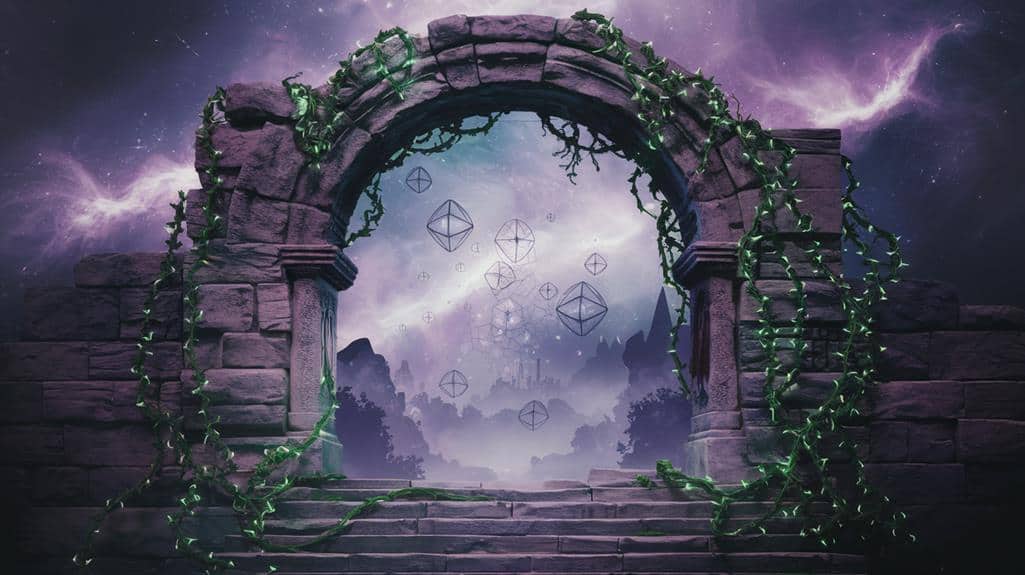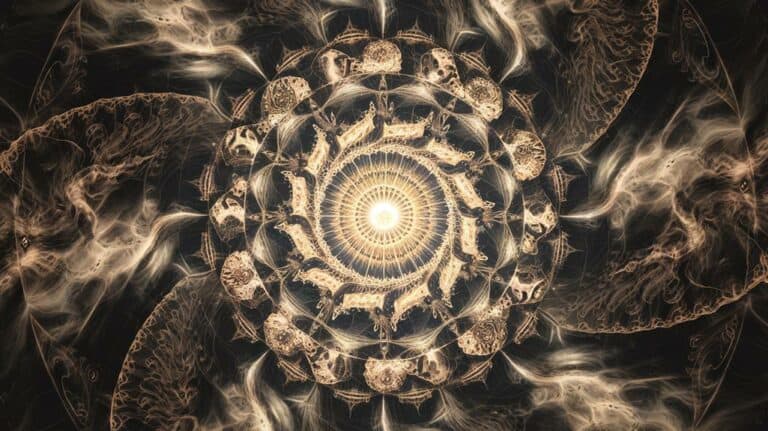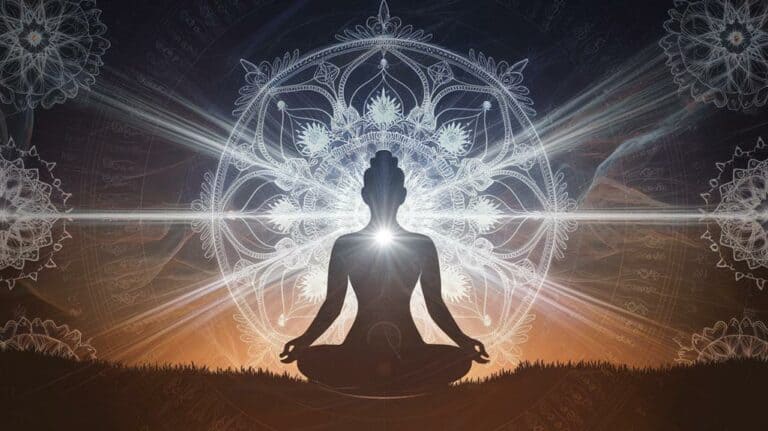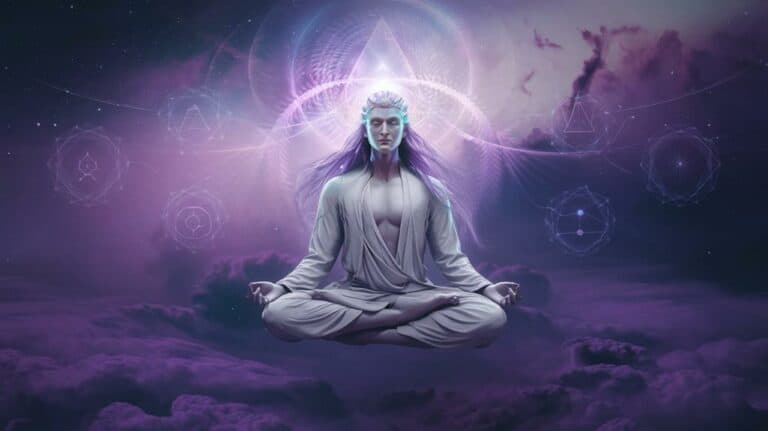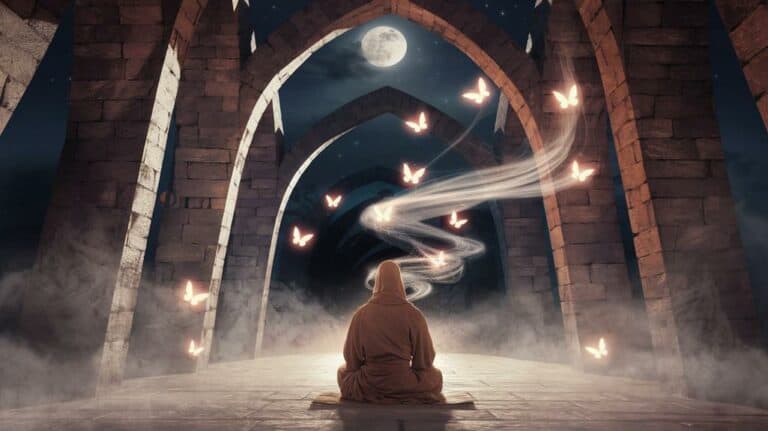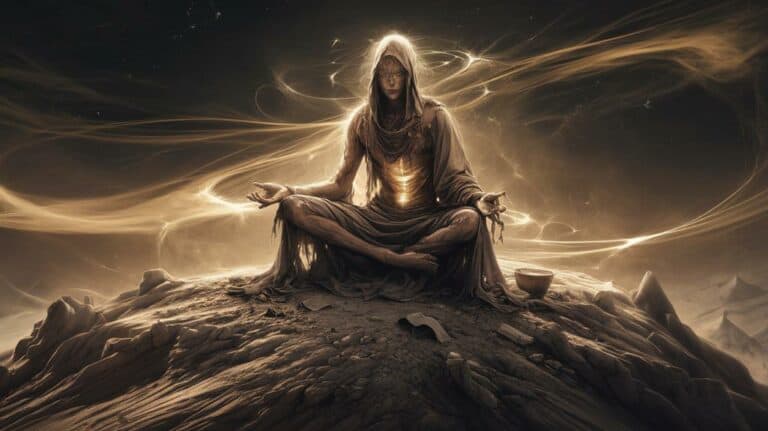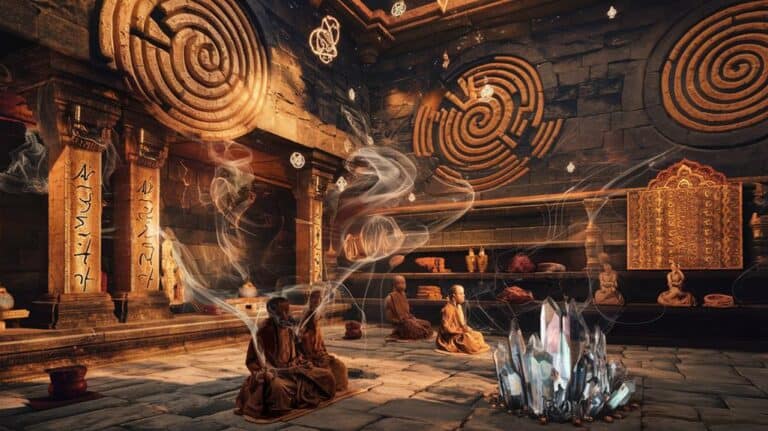Mysticism and Philosophy
You’ve probably wondered about those moments when your mind glimpses something beyond ordinary reality – those fleeting experiences that seem to transcend rational thought. This intersection of mystical insight and philosophical inquiry has captivated thinkers for millennia, from ancient shamans to modern quantum physicists. While you might approach these questions through logical analysis, there’s an undeniable pull toward direct, personal experience of the ineffable. As science and spirituality continue their complex dance, you’ll find that exploring this territory requires both the precision of philosophical thought and the openness to embrace mystery.
Historical Roots of Mystical Philosophy
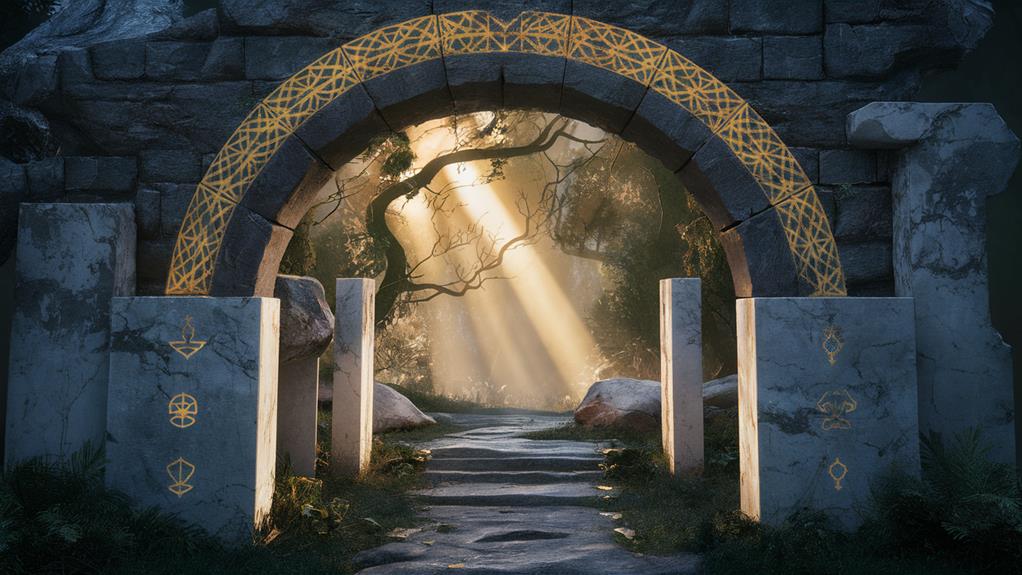
Tracing the origins of mystical philosophy leads us back to ancient civilizations, where early humans first grappled with questions of consciousness and divine reality.
You’ll find these roots deeply embedded in the spiritual practices of Mesopotamian priests, Egyptian mystics, and Indian yogis who sought direct communion with the divine through meditation, ritual, and contemplative practice.
As you explore further, you’ll discover how these early seekers developed sophisticated systems of thought that bridged the material and spiritual domains.
In ancient Greece, the mystery schools of Eleusis brought initiates face-to-face with transcendent experiences, while Pythagoras and his followers combined mathematical precision with mystical insight.
You’ll see similar patterns emerging in Chinese Taoism, where philosophers like Lao Tzu articulated the ineffable nature of ultimate reality through paradox and poetic metaphor.
These ancient traditions haven’t lost their relevance – they’ve shaped how you understand consciousness, reality, and the human potential for transcendent experience.
They’re not just historical curiosities but living traditions that continue to influence modern approaches to spirituality, consciousness exploration, and the eternal quest for direct knowledge of ultimate reality.
Reason Meets Divine Experience
A persistent tension emerges when rational inquiry confronts mystical experience.
You’ll find yourself caught between the precise calculations of logic and the ineffable nature of divine encounters, as your mind attempts to bridge these seemingly incompatible domains.
When you’ve touched the sacred through meditation, prayer, or spontaneous revelation, you’re faced with the challenge of translating that wordless knowing into coherent thought.
Yet you needn’t view reason and mysticism as eternal opponents.
You can discover how your analytical faculties serve as tools to integrate and understand your transcendent experiences, even as you acknowledge their limitations.
When you’re exploring the depths of consciousness, you’ll notice how reason acts as a compass while mystical insight serves as the territory itself.
The boundaries between these modes of knowing aren’t as rigid as you might think – they’re more like permeable membranes, allowing wisdom to flow both ways.
Through this interplay, you’re able to map your spiritual experiences without reducing them to mere intellectual constructs, creating a synthesis that honors both the clarity of thought and the mystery of direct revelation.
Eastern and Western Approaches
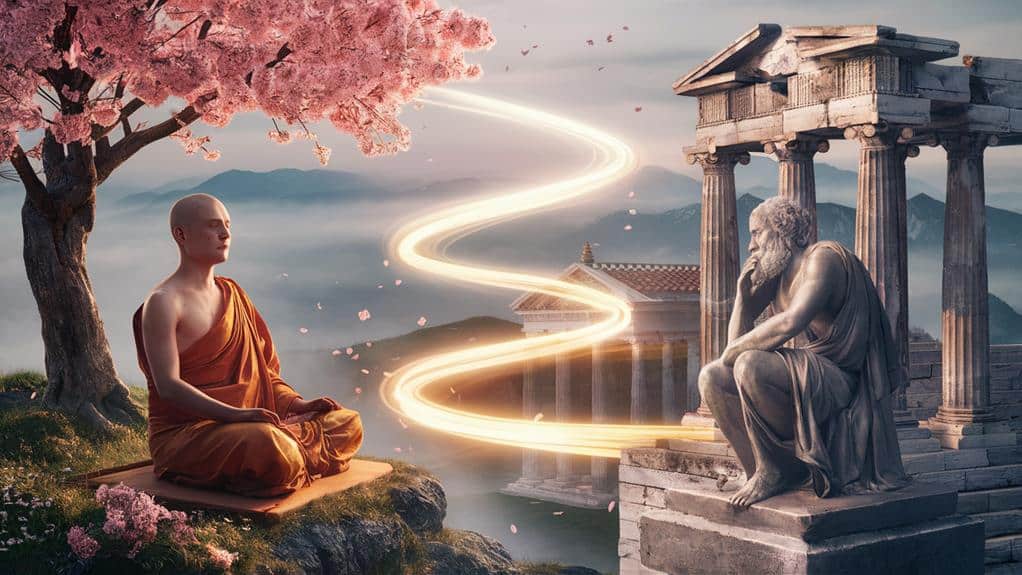
The pathways to mystical understanding diverge sharply between Eastern and Western traditions, yet both lead seekers toward ultimate truth.
In the West, you’ll find an approach that often emphasizes the individual’s direct relationship with the divine, structured through contemplative prayer, meditation on sacred texts, and personal revelation. Your journey might parallel the mystics who’ve walked this path – from Saint Teresa of Ávila to Meister Eckhart – seeking union with the absolute through individual transformation.
Eastern traditions, in contrast, will guide you toward dissolving the very notion of individuality. You’re invited to recognize that your separate self is an illusion, as you’ll discover in Zen’s emphasis on emptiness or Advaita Vedanta’s non-dual awareness.
Here, you won’t find the same sharp distinction between seeker and sought that characterizes Western mysticism. Instead, you’re led to understand that you’re already what you seek – there’s nothing to achieve, only illusions to shed.
Whether you’re drawn to the Western path of transcendence or the Eastern path of recognition, you’ll find that both approaches ultimately point to the same ineffable reality beyond conceptual thought.
Language of Mystical Knowledge
Mystical knowledge presents a paradox when mystics attempt to express the inexpressible through ordinary language. You’ll find that words often fall short when describing transcendent experiences, as language itself emerges from the domain of duality and separation that mystical insights transcend.
When you’re exploring mystical texts, you’ll encounter metaphors, symbols, and poetic expressions that point toward truth rather than directly stating it. You’ll notice how mystics often resort to paradoxical statements like “the soundless sound” or “the void that’s full” to shake you free from conventional thinking.
These linguistic tools aren’t mere artistic flourishes – they’re necessary bridges between ordinary consciousness and mystical understanding.
You’re invited to recognize how language itself transforms when touching the mystical. Words become signposts rather than destinations, and you’ll discover that silence often communicates more than speech.
In your journey through mystical literature, you’ll learn to read between the lines, sensing the depths that lie beneath the surface of words, understanding that language serves as a raft to cross the river of understanding, not as the shore itself.
Modern Scientific Perspectives

Scientists today are exploring mystical experiences through the lens of neuroscience, psychology, and quantum physics. You’ll find researchers mapping brain activity during meditation, documenting altered states of consciousness, and examining the neurological correlates of transcendent experiences.
What you once might’ve dismissed as purely subjective phenomena can now be studied with sophisticated imaging technologies and data analysis.
You’re living in an era where science isn’t dismissing mystical experiences but rather seeking to understand their underlying mechanisms. When you consider how quantum physics reveals the observer’s role in shaping reality, you’ll notice striking parallels with ancient mystical teachings about consciousness and reality’s nature.
Research into psychedelics and contemplative practices shows how your brain can access previously unknown states of awareness, suggesting that mystical experiences aren’t separate from natural processes but are deeply embedded in your neurobiology.
You’re witnessing a convergence where empirical investigation meets spiritual inquiry, and you’ll find that modern science isn’t negating mystical experiences but offering new frameworks through which you can understand these profound aspects of human consciousness.
Altered States and Philosophical Insight
Through altered states of consciousness, philosophers and mystics have gained profound insights into reality’s fundamental nature. When you enter these heightened states of awareness, whether through meditation, contemplative practice, or spontaneous awakening, you’ll find that ordinary boundaries of perception begin to dissolve.
You’re accessing domains of understanding that transcend everyday cognitive processes, revealing interconnections that remain hidden during normal waking consciousness. These altered states aren’t mere escapism – they’re gateways to deeper philosophical comprehension.
You’ll discover that time’s linearity becomes fluid, and the subject-object divide that defines normal experience starts to blur. The insights you gain often align with ancient wisdom traditions while offering fresh perspectives on contemporary philosophical questions.
You’re encountering direct, experiential knowledge that can’t be accessed through logical analysis alone. In these states, you’ll find that consciousness itself becomes both the object and method of investigation.
The boundaries between knower and known dissolve, opening doorways to understanding that bridge the gap between mystical experience and philosophical inquiry. You’re touching the edges of what language can express, yet these experiences inform your philosophical understanding in profound ways.
Future of Mystical Understanding
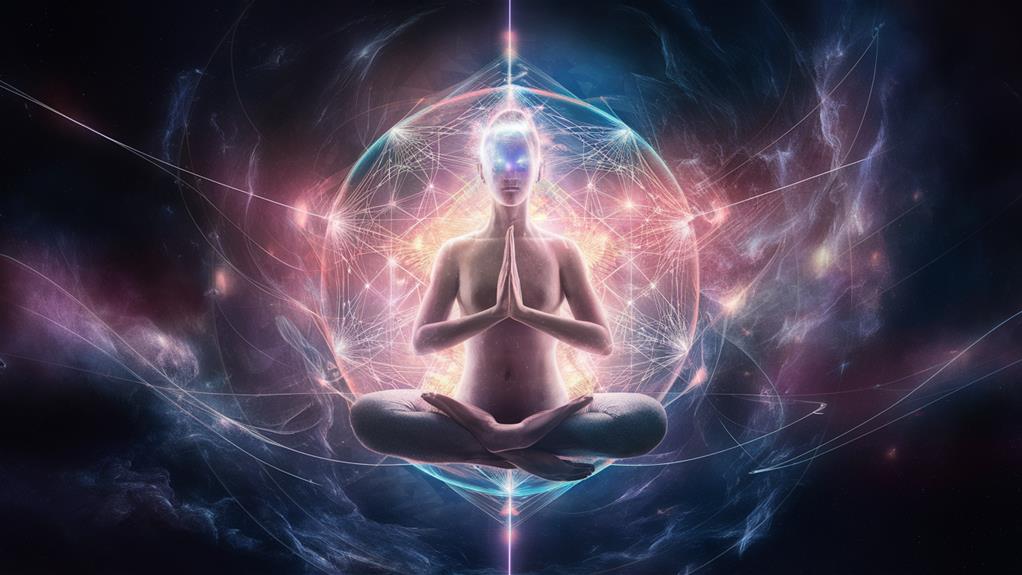
The evolution of mystical understanding stands at a fascinating crossroads between ancient wisdom and modern technology.
You’ll find yourself traversing through emerging paradigms where scientific instruments can now measure meditation states, while artificial intelligence begins to analyze patterns in mystical experiences across cultures and centuries.
You’re witnessing a convergence where neuroscience meets contemplative practice, where you can’t ignore how brain imaging reveals the physical footprints of transcendent states.
Yet you’ll discover that technology isn’t diminishing mysticism’s profound nature – it’s expanding your capacity to understand its depths.
You’re entering an era where virtual reality might simulate sacred spaces, and biofeedback devices could guide your meditation practice.
As you move forward, you’ll need to balance these technological tools with mysticism’s eternal truths.
You’re standing at the threshold of a future where ancient wisdom doesn’t conflict with modern insight but rather enriches it.
Through this synthesis, you’ll find new pathways to explore consciousness, pushing the boundaries of what you once thought possible about mystical understanding and human potential.
Conclusion
As you explore the convergence of mysticism and philosophy, you’ll find that you’re not just examining ancient wisdom or modern theories – you’re participating in humanity’s timeless quest to understand consciousness and divinity. Through your own contemplative practice and philosophical inquiry, you’re weaving together rational thought and mystical insight, creating bridges between the ineffable and the knowable. You’re part of an evolving dialogue that continues to reshape our understanding of existence.



